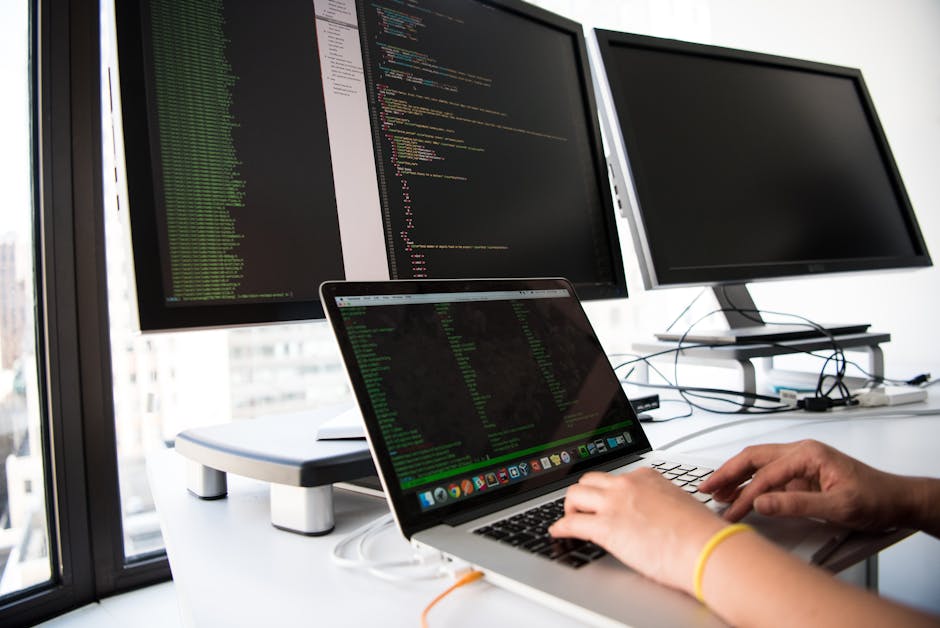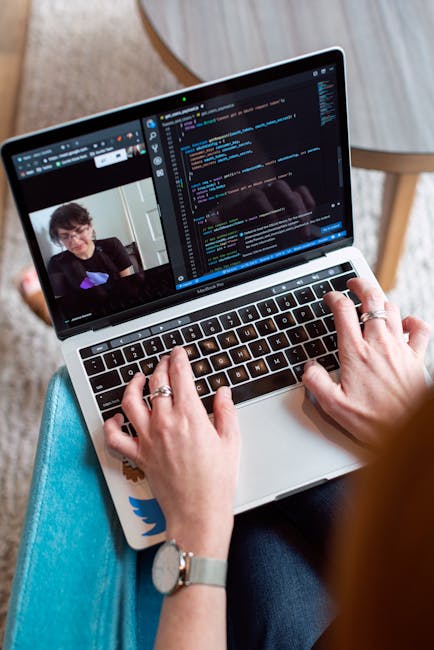
Introduction
The rapid evolution of artificial intelligence (AI) and automation technologies is transforming industries, and software development is no exception. By 2027, many traditional programming jobs may become obsolete due to AI-powered coding tools, no-code/low-code platforms, and shifting market demands. This article explores the factors driving this change, the types of jobs at risk, and how programmers can adapt to thrive in the new landscape.
Lorem ipsum | Lorem ipsum | Lorem ipsum | Lorem ipsum | Lorem ipsum | Lorem ipsum | Lorem ipsum |
|---|---|---|---|---|---|---|
Lorem ipsum | Lorem ipsum | Lorem ipsum | Lorem ipsum | Lorem ipsum | Lorem ipsum | Lorem ipsum |
Lorem ipsum | Lorem ipsum | Lorem ipsum | Lorem ipsum | Lorem ipsum | Lorem ipsum | Lorem ipsum |
The Rise of AI-Driven Development
AI tools like GitHub Copilot, Cursor, and Claude Code have already streamlined coding tasks, enabling developers to write code faster through natural language prompts. By 2027, more advanced models, potentially successors to GPT-5 or Claude 3.5, are expected to generate entire applications from high-level descriptions, reducing the need for manual coding. For example, tools like v0 by Vercel and Opal by Google allow non-programmers to create functional web apps, eroding demand for entry-level coders. A 2025 study by McKinsey estimated that AI could automate up to 30% of current programming tasks by 2030, with significant impacts starting as early as 2027.
No-Code and Low-Code Platforms
No-code/low-code platforms like Bubble, Webflow, and Zapier are empowering non-technical users to build applications and automate workflows. These platforms use visual interfaces and pre-built templates, bypassing traditional coding. By 2027, Gartner predicts that 75% of enterprise applications will be built using low-code platforms, reducing demand for developers who focus on routine web and app development. Small businesses and startups increasingly favor these solutions for their cost-effectiveness and speed, further shrinking opportunities for junior developers.
Automation of Repetitive Tasks
Many programming roles involve repetitive tasks like debugging, testing, and code optimization. AI tools are automating these processes at an unprecedented rate. For instance, automated testing frameworks powered by AI can identify bugs and suggest fixes faster than human developers. By 2027, "VibeOps"—AI-driven DevOps—could handle infrastructure management, deployment, and scaling, roles traditionally filled by backend developers. This shift threatens mid-level programmers who specialize in maintenance rather than innovation.
Jobs Most at Risk
The following roles are particularly vulnerable by 2027:
Entry-Level Coders: Tasks like writing boilerplate code or simple scripts are easily automated by AI tools.
Frontend Developers: No-code platforms like Webflow and Wix are replacing manual HTML/CSS/JavaScript work for websites.
Backend Developers for Routine Systems: Standardized APIs and serverless architectures reduce the need for custom backend solutions.
QA and Testing Engineers: AI-driven testing tools are outperforming humans in identifying edge cases and bugs.
A 2025 X post by a tech recruiter noted that hiring for junior developers dropped 40% in 2024 due to AI adoption, a trend likely to accelerate.
Emerging Opportunities for Programmers
While some jobs will vanish, new roles will emerge:
AI Prompt Engineers: Crafting precise prompts for AI coding tools requires a blend of technical and creative skills.
System Architects: Designing complex, AI-integrated systems will remain a human-led task.
Security Specialists: AI-generated code introduces vulnerabilities, increasing demand for cybersecurity experts to audit and secure systems.
AI Tool Trainers: Programmers with domain expertise will be needed to fine-tune AI models for specific industries like healthcare or finance.
Custom AI Development: Building specialized AI solutions for niche applications will require deep programming knowledge.
Programmers who upskill in AI, machine learning, and system design will find opportunities in these areas. For example, Y Combinator’s 2025 cohort saw a surge in startups hiring for “AI wranglers”—developers who manage and optimize AI tools.
The Role of Vibe Coding
Vibe coding, popularized in 2025, allows developers to focus on high-level ideas while AI handles implementation. By 2027, this approach could dominate prototyping and MVP development, reducing the need for traditional coding skills. However, vibe coding’s reliance on AI-generated code raises concerns about quality and maintainability, creating demand for programmers who can oversee and refine these outputs. Those who master vibe coding while maintaining expertise in debugging and optimization will remain competitive.
Economic and Market Pressures
Economic factors will amplify job losses. As companies face pressure to cut costs, AI’s affordability—often a fraction of a developer’s salary—makes it an attractive alternative. A 2025 report by Deloitte highlighted that 60% of tech firms plan to increase AI investments while reducing headcount for routine development roles by 2027. Additionally, global competition from freelance platforms means employers can access cheaper talent for specialized tasks, further challenging traditional programmers.
How Programmers Can Adapt
To stay relevant, programmers must evolve:
Learn AI and ML: Understanding how AI tools work and how to integrate them into workflows is critical.
Specialize in High-Demand Areas: Focus on fields like cybersecurity, blockchain, or quantum computing, which require human expertise.
Master Soft Skills: Communication and problem-solving skills will be essential for roles involving AI collaboration and system design.
Embrace Interdisciplinary Knowledge: Combining programming with domains like biology or finance opens niche opportunities.
Contribute to Open Source: Building a portfolio of AI-enhanced projects showcases adaptability and expertise.
Online platforms like Coursera and Udemy already offer courses in AI-driven development, and communities on X emphasize continuous learning to stay ahead.
The Human Element
While AI can generate code, human creativity, critical thinking, and ethical judgment remain irreplaceable. Complex projects requiring innovation, cultural context, or ethical considerations will still need skilled programmers. For instance, AI struggles with novel problem-solving or ensuring fairness in algorithmic outputs, areas where humans excel. Programmers who position themselves as strategic thinkers rather than code-writers will thrive.
Conclusion
By 2027, AI, no-code platforms, and automation will reshape the programming job market, eliminating many traditional roles while creating new ones. Programmers who adapt by upskilling in AI, specializing in high-demand areas, and embracing interdisciplinary roles will find opportunities in this evolving landscape. The future belongs to those who can blend technical expertise with creativity and strategic oversight, ensuring they remain indispensable in an AI-driven world.




